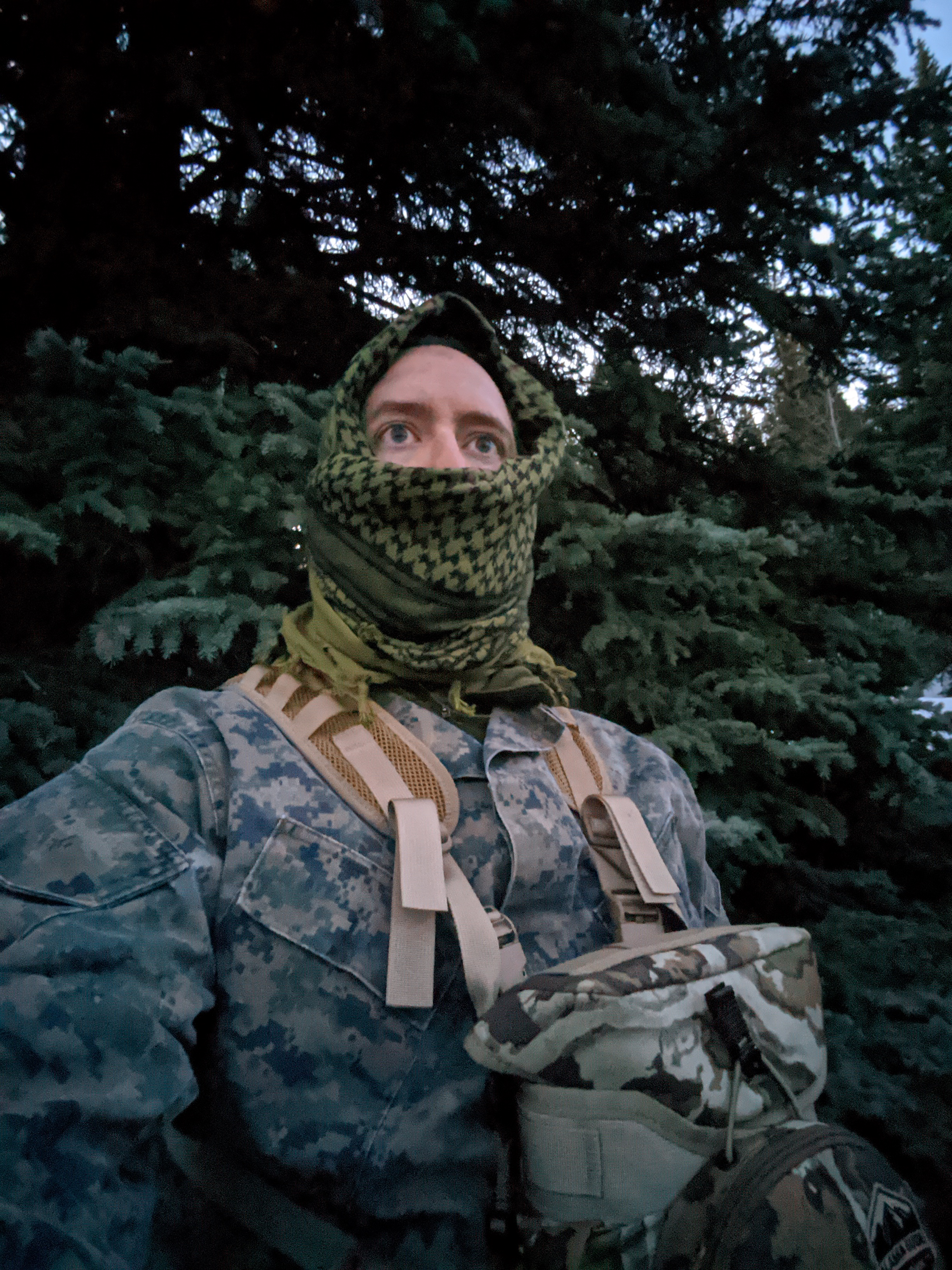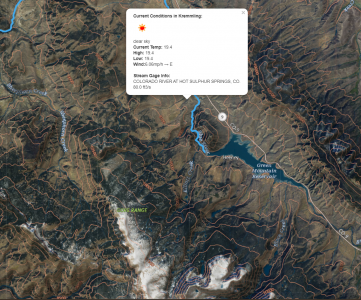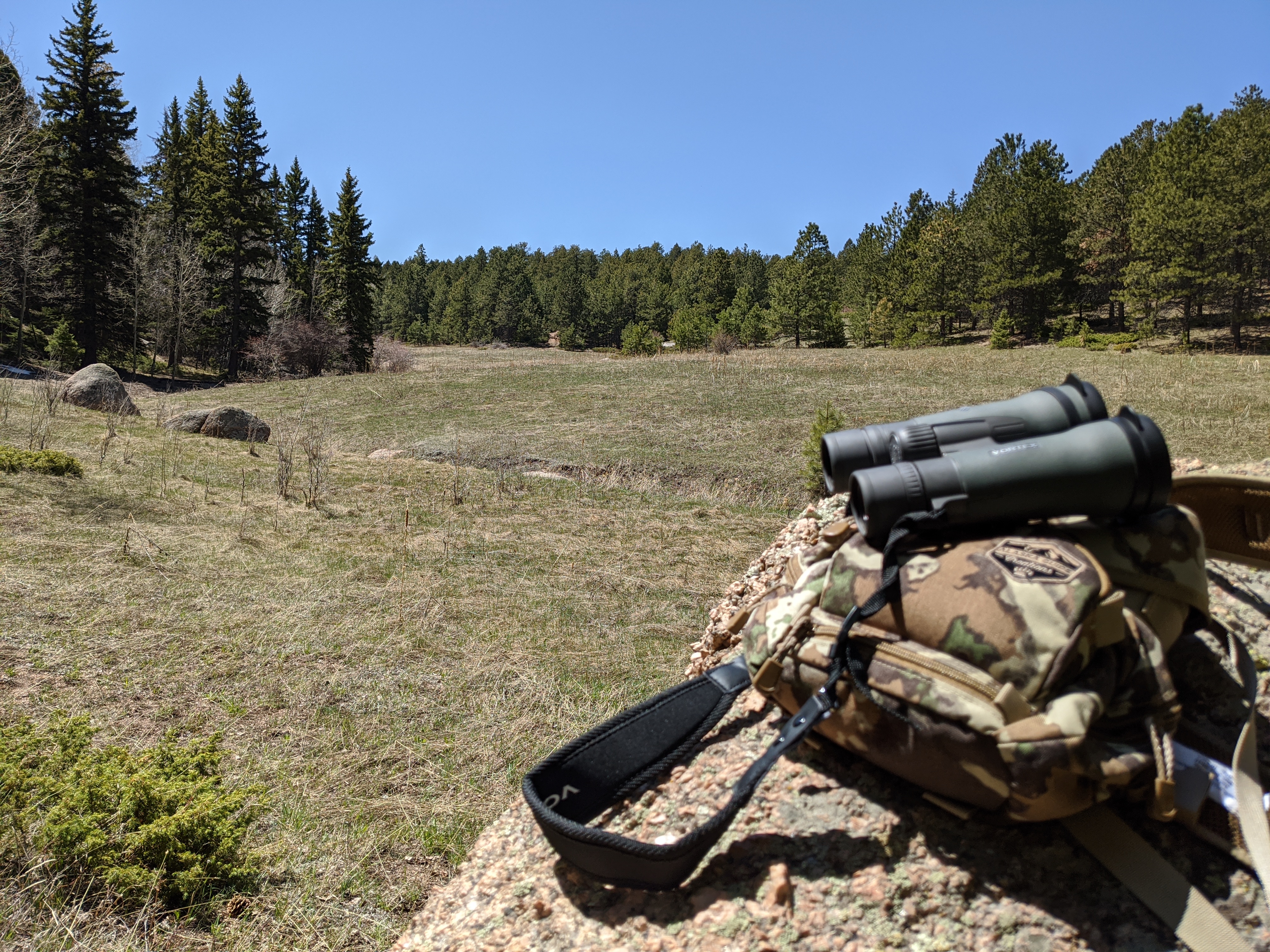I’ll start off by saying I’m a little biased here. Not only do I qualify as a millennial by being nearly 33 years old, but I’ve grown up in a period of nearly twenty years of Middle Eastern conflict. What does that have to do with anything? In the time from my high school to college career a shemagh has gone from something you see in the movies hiding the faces of bad guys to a fashionable accessory. However, I don’t see a whole lot of people wearing a shemagh in the woods — but I have seen a fair amount of folks, maybe if only on social media wearing scarves and neck gaiters. That said, most options are cheap, like $12.
While you may see this Middle Eastern scarf, head wear, versatile all-cotton or wool cloth on college campuses or walking downtown masquerading as street wear I’m a believer for its utility in the woods and the water.
Wear it as a Scarf or Gaiter

The shemagh I purchased while in Jordan isn’t particularly warm, but when you wrap it around your neck and use it as a scarf its many layers provide you with a way to cap off the collar of your jacket and keep some of the warmth at your core. You may look like a backwoods dandy but who gives a rip? After all, before UnderArmour men were wearing womens pantyhose under their Woolrich red plaid Pennsylvania Tuxedos in order to keep warm. Take that, lumbersexual fashion police! Wearing it as a scarf also doubles as a buff, keeping the sun rays off your neck is important when you’re on the water fishing out of a kayak, or just hanging out.
Wear it as a Bandana.
Maybe I’m alone here, but when I make the ascent to my stand that’s directly up hill I sweat no matter how slow I go. For this I started wearing a bandana when making the climb, and then packaging it up in my bag as I sit for the day.
I use it on colder weather days for a little bit of orange, since Pennsylvania requires an orange hat but doesn’t further specify the shape of said headgear. So long as it meets the square inches requirement, you’re good to go. On those cold sits I’ll turn it back into a facemask…
Wear it as a Facemask
This is actually what got me first wearing a shemagh for hunting. I’d picked one up in college and wore it nearly daily during the fall and winter, so I had it with me during a Turkey season where I didn’t have anything to cover my face, and most facemasks were not helping my aiming situation due to constantly fogging up my glasses. Tying a shemagh in a “ninja” style leaving a slit for only your eyes gives a surprising amount of flexibility for adjustment to your comfort. You can adjust the fit and lower the facemask if you’re wearing specs like me, and allow your breath to not fog your corrected vision. While my Bedouin friends in Jordan would not approve of simply wearing it this way, they did understand my reasoning, after all they were once great hunters themselves.

Wear it as a Bonefishing Hat

If you’re going to be resigned to looking like a tool with a long brimmed hat and a neck flap that cascades with quick dry fabric down your shoulders you may as well do a little cultural appropriation. With a light colored shemagh and cords sold throughout the middle east called an agal you can become the Sheikh of the Susquehanna! You may have heard this configuration called a kiffeyeh, but other than some cultural differences in patterns they are basically the same.
While I have no intent on wearing a giant floppy hat, I realize over tanning and burning your skin is a real risk that fishermen should take into account. I’m more than willing to wear this and then throw on my polarized sunglasses to do a little summer sight fishing. Just… watch your casting. An easy alternative is to fold it into a square and place an adjusted ballcap over it, you know, in case you didn’t want to be mistaken for a Sheikh.
A Note on Materials
Not all of these scarves are created equally. While I spent some time in the Middle East I was able to stop in at a couple local shouks or souks (Hebrew or Arabic depending on your neighborhood) and take a look at a myriad of options. Some weaves were much heavier and commanded a steeper price, while others were loose and intended mostly for fashionable wear for tourists. In Jordan I spotted my first blaze orange and black checked shemagh which I snapped up immediately to the incredulity of our local friends. It’s not exactly a color pattern common for folks to buy, apparently.
Les Stroud of Survivorman fame often says “You sweat, you die.” when discussing survival situations. It’s true that excessive perspiration leads to dehydration. It’s also true that perspiring into a non wicking fabric such as cotton will not only stink but linger about next to your body causing everything from a rash to hypothermia risk when you cool. A mantra among outdoorsy folks “cotton kills”. When cotton becomes moist the insulation properties drop to near zero. However, despite this common turn of phrase there have been studies (Dry and Wet Heat Transfer Through Clothing Dependent on the Clothing Properties Under Cold Conditions, Rossi, et al) that suggest that while cotton retains more water the evaporative heat loss is less than you’d think.
Most shemaghs that I’ve encountered are 100% Egyptian Cotton, as it is traditional for the region from which they hail. But some companies like North x North make an all merino option that provides more warmth retention and less stink. I will say $75 seems a little steep for a scarf, but I have a shemagh in my pack all the time, so perhaps the price is worth it to you. For reference, FirstLite offers a neck gaiter at $35 for a mid weight option, and a balaclava at $40 both in Merino. We’ll be testing out the North x North offering in a future review, thanks Chad!
Merino, as we’ve written before (Embrace the Stink) retains less human odor and can be worn for much longer than the same product made from cotton. With a product meant to be close to your head, neck, and ears it will pick up the perspiration created from the walk in to your stand or even just the water droplets from your breath. You’ll want all the help you can get in keeping the human scent down.
So which is it, a valuable tool and a great gear addition, or a hipster accessory for the Tacti-cool? We’d love to hear from you on social media.








